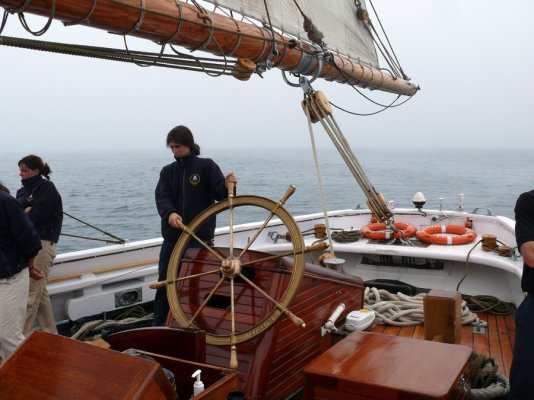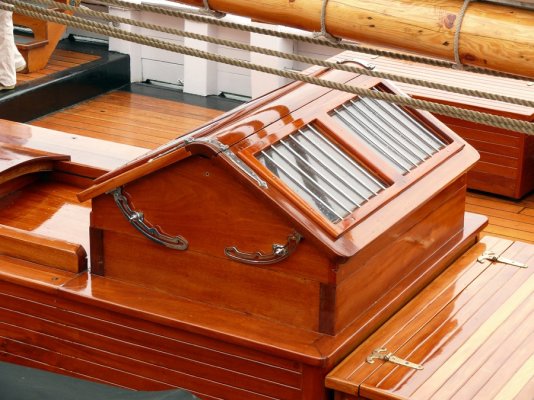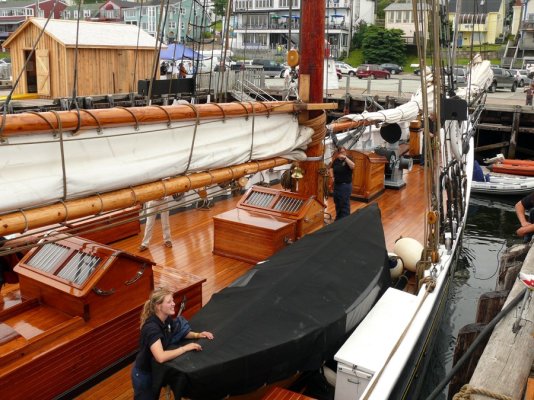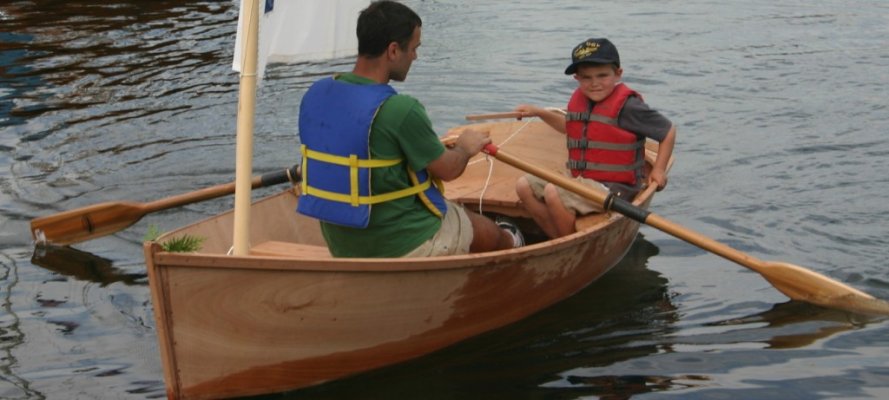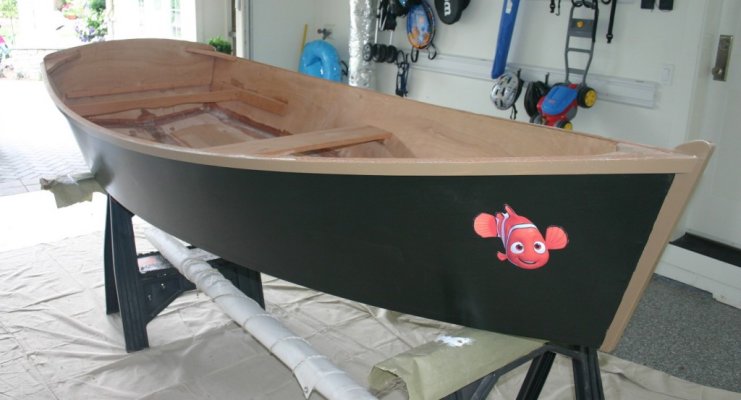I wasn't sure where to put this so I figured here was as good as anywhere.* But I thought some of you might like to see a bit of the working world of boats, in this case the lobster boats of Prince Edward Island.* I just got back from spending some time there during the course of which we got to meet and hang out with some of the* lobstermen.
They fish for lobster all around this 100-mile-long island but on the north shore there are not many natural harbors, so they made their own.* The small basin in the first three photos is man-made and entered through a narrow man-made channel.* The open water beyond the entrance is the Gulf of St. Lawrence.
Most of the boats work a string of 300 pots.* The lobster season is not long, and ends on the last day of June.* This year was a very good year for the catch, but the prices were very depressed because of the economy.* The price of a lobster dinner in the restaurants in town was about $26.* But we could buy live lobsters off the boats for $3.50 each.
There are hundreds of boats based on PEI but because the water around the island freezes in the winter, they are all pulled out by fall.* It's common to be driving around and see lobsterboats on the front lawns of the farms.* They sit in cradles that can be fitted with wheels for towing to the launch sites.
The pilothouses of the PEI boats are unique in that the sidewall on the helm side can be hinged up to the overhead and part of the aft bulkhead slid sideways to provide an open but covered area for pulling the pots which can then be carried aft to be unloaded, rebaited, and relaunched.* The powered pot puller is the big round thing mounted on the helm console.* When running or in bad weather the sidewall is hinged back down and fastened and the section of aft bulkhead slid closed to create a heated, fully enclosed pilothouse.
The PEI boats are almost all 44' 11". We were told that a different license fee or tax or something kicks in when a boat is 45' or more.* Some of the boats we saw or were on were wood, but most today are fiberglass.* All are single-engine (Cummins engines seem to be the most popular) and no PEI lobsterman with any self-respect would be caught dead with a bow thruster: they'd be laughed off the island.* Based on what we experienced these guys are amazing boat handlers.* They deal with incredible tidal currents.* The Bay of Fundy which is not all that far away has the greatest tidal range in the world--- 50 feet.* PEI is not far behind.
Anyway, it's a fascinating part of the working boat world and we felt privileged to be included in it even for just a little while.
-- Edited by Marin on Thursday 9th of July 2009 01:13:52 AM
They fish for lobster all around this 100-mile-long island but on the north shore there are not many natural harbors, so they made their own.* The small basin in the first three photos is man-made and entered through a narrow man-made channel.* The open water beyond the entrance is the Gulf of St. Lawrence.
Most of the boats work a string of 300 pots.* The lobster season is not long, and ends on the last day of June.* This year was a very good year for the catch, but the prices were very depressed because of the economy.* The price of a lobster dinner in the restaurants in town was about $26.* But we could buy live lobsters off the boats for $3.50 each.
There are hundreds of boats based on PEI but because the water around the island freezes in the winter, they are all pulled out by fall.* It's common to be driving around and see lobsterboats on the front lawns of the farms.* They sit in cradles that can be fitted with wheels for towing to the launch sites.
The pilothouses of the PEI boats are unique in that the sidewall on the helm side can be hinged up to the overhead and part of the aft bulkhead slid sideways to provide an open but covered area for pulling the pots which can then be carried aft to be unloaded, rebaited, and relaunched.* The powered pot puller is the big round thing mounted on the helm console.* When running or in bad weather the sidewall is hinged back down and fastened and the section of aft bulkhead slid closed to create a heated, fully enclosed pilothouse.
The PEI boats are almost all 44' 11". We were told that a different license fee or tax or something kicks in when a boat is 45' or more.* Some of the boats we saw or were on were wood, but most today are fiberglass.* All are single-engine (Cummins engines seem to be the most popular) and no PEI lobsterman with any self-respect would be caught dead with a bow thruster: they'd be laughed off the island.* Based on what we experienced these guys are amazing boat handlers.* They deal with incredible tidal currents.* The Bay of Fundy which is not all that far away has the greatest tidal range in the world--- 50 feet.* PEI is not far behind.
Anyway, it's a fascinating part of the working boat world and we felt privileged to be included in it even for just a little while.
-- Edited by Marin on Thursday 9th of July 2009 01:13:52 AM
Attachments
-
 lobster15.jpg118.2 KB · Views: 75
lobster15.jpg118.2 KB · Views: 75 -
 lobster14.jpg745.6 KB · Views: 73
lobster14.jpg745.6 KB · Views: 73 -
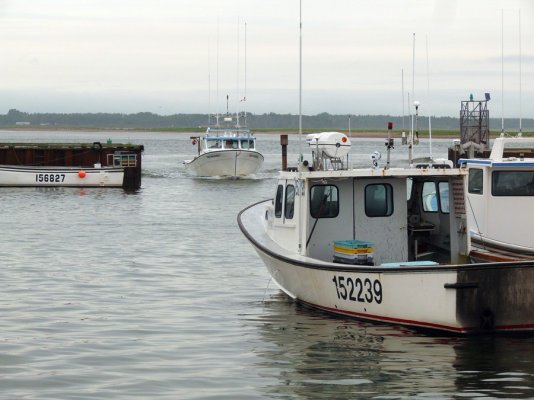 lobster13.jpg139.5 KB · Views: 85
lobster13.jpg139.5 KB · Views: 85 -
 lobster12.jpg169.8 KB · Views: 72
lobster12.jpg169.8 KB · Views: 72 -
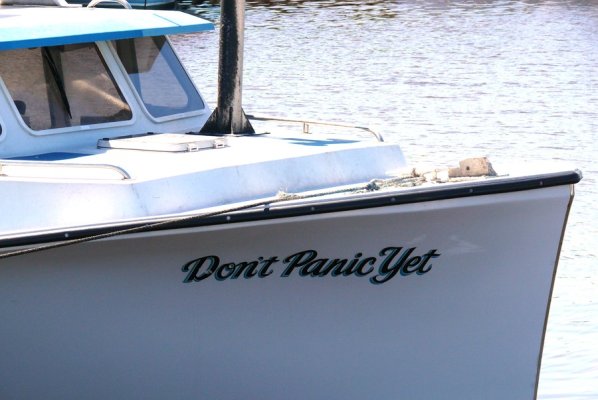 name2.jpg127 KB · Views: 75
name2.jpg127 KB · Views: 75 -
 name1.jpg80.9 KB · Views: 73
name1.jpg80.9 KB · Views: 73 -
 lobster8.jpg771.5 KB · Views: 70
lobster8.jpg771.5 KB · Views: 70 -
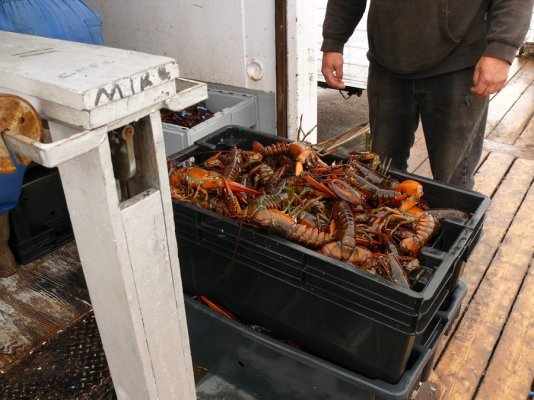 lobster7.jpg185.9 KB · Views: 71
lobster7.jpg185.9 KB · Views: 71 -
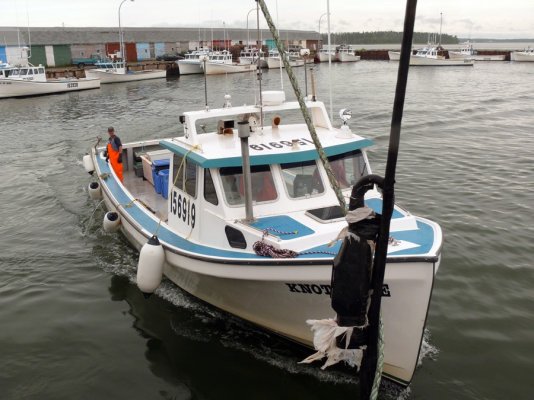 lobster6.jpg161.1 KB · Views: 73
lobster6.jpg161.1 KB · Views: 73 -
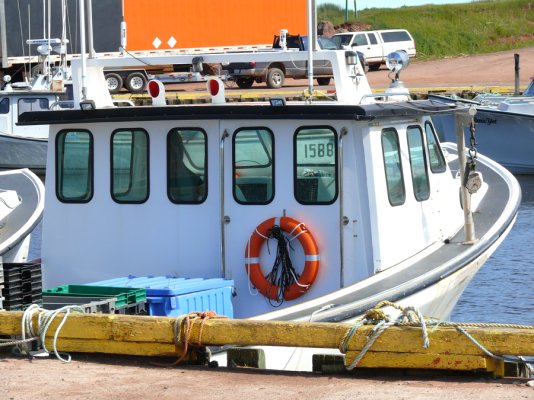 lobster5.jpg761.8 KB · Views: 67
lobster5.jpg761.8 KB · Views: 67 -
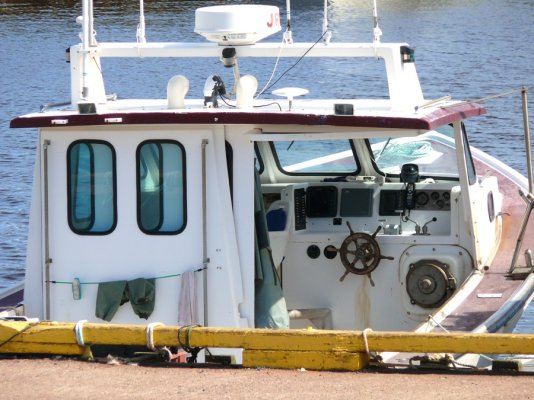 lobster4.jpg178.2 KB · Views: 87
lobster4.jpg178.2 KB · Views: 87 -
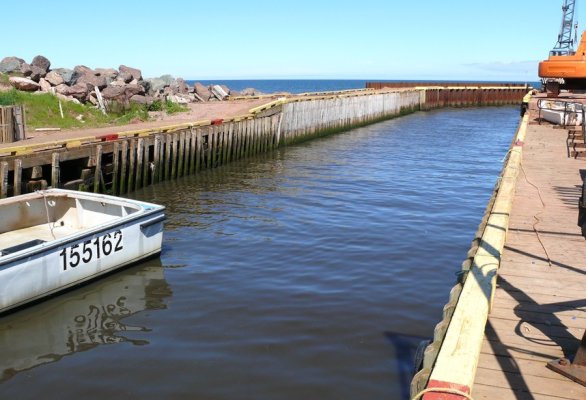 lobster11.jpg147.5 KB · Views: 83
lobster11.jpg147.5 KB · Views: 83 -
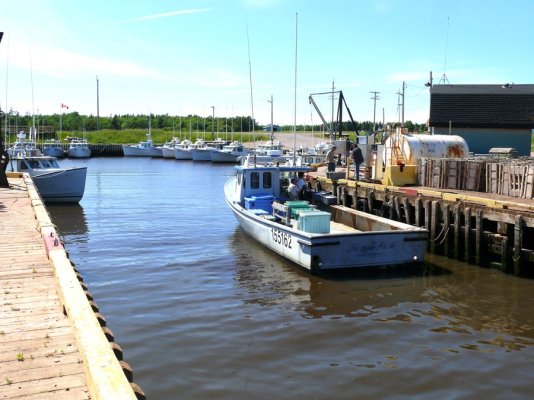 lobster10.jpg163.2 KB · Views: 77
lobster10.jpg163.2 KB · Views: 77 -
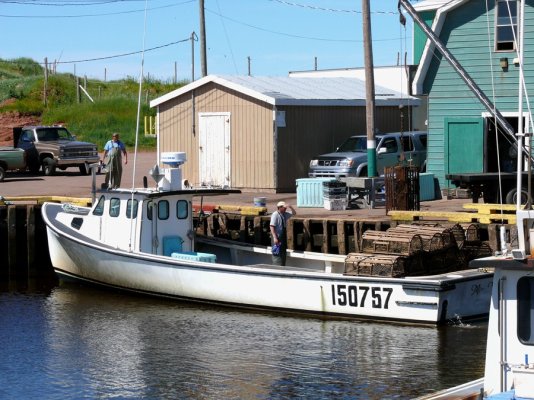 lobster9.jpg211.5 KB · Views: 91
lobster9.jpg211.5 KB · Views: 91


